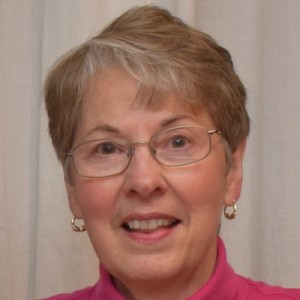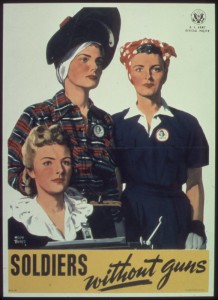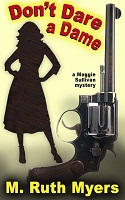 Relevant History welcomes M. Ruth Myers, who received a Shamus Award from the Private Eye Writers of America for Don’t Dare a Dame, the third book in her Maggie Sullivan mystery series. The series follows a woman private investigator in Dayton, Ohio, from the end of the Great Depression through the end of WW2. Other novels by the author, in various genres, have been translated, optioned for film, and condensed for magazine publication. She earned a Bachelor of Journalism degree from the University of Missouri J-School and worked on daily papers in Wyoming, Michigan and Ohio. To learn more about Ruth and her books, visit her
Relevant History welcomes M. Ruth Myers, who received a Shamus Award from the Private Eye Writers of America for Don’t Dare a Dame, the third book in her Maggie Sullivan mystery series. The series follows a woman private investigator in Dayton, Ohio, from the end of the Great Depression through the end of WW2. Other novels by the author, in various genres, have been translated, optioned for film, and condensed for magazine publication. She earned a Bachelor of Journalism degree from the University of Missouri J-School and worked on daily papers in Wyoming, Michigan and Ohio. To learn more about Ruth and her books, visit her
web site and blog, and follow her on Facebook, Twitter, Goodreads, and Pinterest.
*****
Time constraints cause most survey history classes to focus on generals and royalty; statesmen; luminaries in the arts and sciences. Small wonder ordinary folks like most of us feel no connection to such distant people and see no link between their world and ours today.
That’s why I’m currently writing the fifth book in a mystery series about a woman private eye in 1930s and 1940s Dayton, Ohio. Yes, she carries a .38 and keeps a bottle of gin in her office desk like her male counterparts. But she lives in an all-woman rooming house, as was typical for America’s first-wave career women. She’s slighted because of her gender. When her bank account runs low, she eats sardines and crackers to stretch her money. In other words, she’s an ordinary person with worries much like our own, but living in times much different than ours. We can identify with her, yet the world she inhabits is just a bit exotic.
Her name is Maggie Sullivan, and I created her for two reasons.
First, I wanted to bring to life the American women of what’s widely known as the Greatest Generation, the generation that on the battlefield and at home was the lifeblood of World War II. Most movies and novels depict them as sweethearts left behind or as Rosie the Riveter, or dancing with GI’s at USO dances. In recent years, belatedly, and usually pegged to an occasion like Veterans Day, an article here and there recognizes the women who flew military planes from one base to another or performed similar auxiliary functions.
The women overlooked
Overlooked are the countless women who stepped into jobs on newspapers, in shops and offices, as cartoonists or university instructors to keep the country moving. During World War II, the number of American women working outside the home increased from 25% to 36%.
Unmentioned is the shortage of housing women faced as they flocked to cities to enable American factories to produce vital supplies. In San Diego, with its booming aircraft industry, many single women were forced to sleep in shifts in a single room. In Washington, D.C., both genders searched the obituaries in order to pounce on apartments that became available.
In Dayton, Ohio, young women who had trained as teletype operators arrived to work at what is now Wright-Patterson A.F.B. Shortage of barracks meant many had to live miles away in the city’s YWCA or in boarding houses where they shared a laundry tub and a kitchen in the basement, riding to their around-the-clock shifts in an unheated bus with hand straps and a few bench seats.
 Housing was just one of the hardships faced by women whose husbands flooded into the military. If they wanted to live with their husband while he was in training, they’d find themselves sharing an apartment with another couple, or living in a lean-to, possibly with no bathtub. Nor were they always welcomed by locals. Two teachers from Missouri recall being called “low-down soldiers’ wives” and “damn Yankees” when they went to see their husbands at Ft. Knox, KY. The “rooms” they managed to find consisted of cots in the hall of rooming houses. When their husbands shipped out, women knew they wouldn’t see them again until the war ended—or they came home too badly wounded for further service. Because the military censored letters from men in uniform, the women at home didn’t even know the country where they were stationed.
Housing was just one of the hardships faced by women whose husbands flooded into the military. If they wanted to live with their husband while he was in training, they’d find themselves sharing an apartment with another couple, or living in a lean-to, possibly with no bathtub. Nor were they always welcomed by locals. Two teachers from Missouri recall being called “low-down soldiers’ wives” and “damn Yankees” when they went to see their husbands at Ft. Knox, KY. The “rooms” they managed to find consisted of cots in the hall of rooming houses. When their husbands shipped out, women knew they wouldn’t see them again until the war ended—or they came home too badly wounded for further service. Because the military censored letters from men in uniform, the women at home didn’t even know the country where they were stationed.
Relatable history
My second goal in writing the Maggie Sullivan mysteries was to make history relevant by helping some of my readers recognize that people are still alive in their own families who, if not part of the Greatest Generation itself, have childhood memories of the 1940s or remember a parent or grandparent talking about that era. Readers can compare history with things in their own experience: rotary phones to cell phones; snail mail to real-time Skype conversation with loved ones in distant places; World War II rationing of food, clothes and other essentials to current day flag bumper stickers. If you have a female relative who did something interesting on the World War II home front, I invite you to contribute photos and share her story.
Through Maggie Sullivan and her friends on the home front, I attempt to show ordinary Americans, a typical Midwestern community, and American society itself, as they move from a sort of innocence in the waning years of the Great Depression into and through the reality of World War II. If I’ve done my job right, readers will be able to hear the click of heels on the wooden floor at McCrory’s five and dime and see people from all walks of life pulling together to support their fighting men. If I’ve done my job right, they’ll be able to touch history.
*****
 A big thanks to M. Ruth Myers. No Game for a Dame (Maggie Sullivan #1) is available free for Kindle, Nook, Apple, and Kobo. (Note: No Game for a Dame is an excellent read. I posted a five-star review for it on Amazon.) In addition, Ruth will give away a paperback copy of Don’t Dare a Dame (Maggie Sullivan #3) to someone who contributes a comment on my blog this week. I’ll choose the winner from among those who comment by Friday at 6 p.m. ET. Delivery is available in the U.S. only.
A big thanks to M. Ruth Myers. No Game for a Dame (Maggie Sullivan #1) is available free for Kindle, Nook, Apple, and Kobo. (Note: No Game for a Dame is an excellent read. I posted a five-star review for it on Amazon.) In addition, Ruth will give away a paperback copy of Don’t Dare a Dame (Maggie Sullivan #3) to someone who contributes a comment on my blog this week. I’ll choose the winner from among those who comment by Friday at 6 p.m. ET. Delivery is available in the U.S. only.
**********
Did you like what you read? Learn about downloads, discounts, and special offers from Relevant History authors and Suzanne Adair. Subscribe to Suzanne’s free newsletter.

 Relevant History welcomes M. Ruth Myers, who received a Shamus Award from the Private Eye Writers of America for Don’t Dare a Dame, the third book in her Maggie Sullivan mystery series. The series follows a woman private investigator in Dayton, Ohio, from the end of the Great Depression through the end of WW2. Other novels by the author, in various genres, have been translated, optioned for film, and condensed for magazine publication. She earned a Bachelor of Journalism degree from the University of Missouri J-School and worked on daily papers in Wyoming, Michigan and Ohio. To learn more about Ruth and her books, visit her
Relevant History welcomes M. Ruth Myers, who received a Shamus Award from the Private Eye Writers of America for Don’t Dare a Dame, the third book in her Maggie Sullivan mystery series. The series follows a woman private investigator in Dayton, Ohio, from the end of the Great Depression through the end of WW2. Other novels by the author, in various genres, have been translated, optioned for film, and condensed for magazine publication. She earned a Bachelor of Journalism degree from the University of Missouri J-School and worked on daily papers in Wyoming, Michigan and Ohio. To learn more about Ruth and her books, visit her Housing was just one of the hardships faced by women whose husbands flooded into the military. If they wanted to live with their husband while he was in training, they’d find themselves sharing an apartment with another couple, or living in a lean-to, possibly with no bathtub. Nor were they always welcomed by locals. Two teachers from Missouri recall being called “low-down soldiers’ wives” and “damn Yankees” when they went to see their husbands at Ft. Knox, KY. The “rooms” they managed to find consisted of cots in the hall of rooming houses. When their husbands shipped out, women knew they wouldn’t see them again until the war ended—or they came home too badly wounded for further service. Because the military censored letters from men in uniform, the women at home didn’t even know the country where they were stationed.
Housing was just one of the hardships faced by women whose husbands flooded into the military. If they wanted to live with their husband while he was in training, they’d find themselves sharing an apartment with another couple, or living in a lean-to, possibly with no bathtub. Nor were they always welcomed by locals. Two teachers from Missouri recall being called “low-down soldiers’ wives” and “damn Yankees” when they went to see their husbands at Ft. Knox, KY. The “rooms” they managed to find consisted of cots in the hall of rooming houses. When their husbands shipped out, women knew they wouldn’t see them again until the war ended—or they came home too badly wounded for further service. Because the military censored letters from men in uniform, the women at home didn’t even know the country where they were stationed. A big thanks to M. Ruth Myers. No Game for a Dame (Maggie Sullivan #1) is available free for
A big thanks to M. Ruth Myers. No Game for a Dame (Maggie Sullivan #1) is available free for